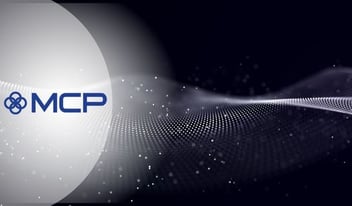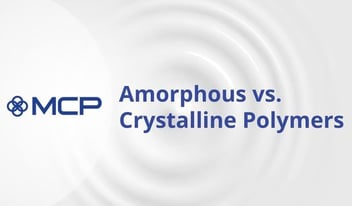
What is Styrene-Butadiene Latex? Styrene-butadiene (SB) latex is a common type of emulsion polymer used in a number of industrial and commercial applications. Because it’s composed of two different types of monomers, styrene and butadiene, SB latex..
What is Styrene-Butadiene Latex?
Styrene-butadiene (SB) latex is a common type of emulsion polymer used in a number of industrial and commercial applications. Because it’s composed of two different types of monomers, styrene and butadiene, SB latex is classified as a copolymer. Styrene is derived from reacting benzene and ethylene, and butadiene is a byproduct of ethylene production.
Styrene-butadiene latex differs from both of its monomers and from natural latex, which is made from the sap of Hevea brasiliensis trees (aka rubber trees). It also differs from another manufactured compound, styrene-butadiene rubber (SBR), which shares a similar name but offers a different set of properties. We’ll discuss SBR a bit more in the next section, but you can read more about the differences between SB rubber and SB latex in our companion article.
History of Styrene-Butadiene Latex
Over the years, chemists worked to improve the properties of natural rubber. Almost everyone knows about Charles Goodyear, who developed the process of vulcanization in the early 1800s, mixing latex rubber with sulfur and lead oxide to make a harder, more durable rubber product. But the rise of the auto industry in the early 1900s put increased demands on the supply of natural latex and spurred scientists around the world to re-create rubber in the laboratory.
Dr. Walter Bock was one such scientist, and in 1929, he discovered how to make a synthetic rubber by polymerizing styrene and butadiene in just the right proportion — 25 percent styrene and 75 percent butadiene. His product was known as styrene-butadiene rubber, and it was marketed under the trade name Buna S. The versatile product found its way into a number of applications, ranging from vehicle tires and conveyor belts to shoe soles and floor mats.
After World War II, chemists continued to experiment with styrene-butadiene-based materials and found that the copolymer was quite versatile. By changing the ratio of styrene to butadiene or by adding other chemicals — including functional monomers, surfactants and initiators — they found they could alter the final properties of the resulting material. Styrene-butadiene latex, which behaved quite differently than SBR, was born out of these experiments. The development of latex paint by Dow Chemical Company in the late 1940s was one of the first great applications of styrene-butadiene latex. As a binder used in a 60-40 ratio, styrene-butadiene latex improved the adhesion and durability of water-based paints. Latex paint products had little odor, were non-toxic and non-flammable, and cleanup was easy with water.
Over time, chemists were able to further adapt and refine the emulsion polymerization process to create new uses, new products and branch out into new markets for SB latex, in products such as paper coatings, textile back coatings, and nonwovens.
CAN'T FIND WHAT YOU'RE LOOKING FOR?
Manufacturing of Styrene-Butadiene Latex
Styrene-butadiene latex is manufactured through the polymer emulsion process. This involves adding the monomers to water along with surfactants, initiators, carboxylic acids and specialty monomers. Initiators trigger the chain-reaction polymerization that joins the styrene monomer to the butadiene monomer. Butadiene itself is the union of two vinyl groups, so it is capable of reacting with four other monomer units. As a result, it can extend the growth of the polymer chain but is also able to link one polymer chain to another. This is called crosslinking, and it’s vitally important to styrene-butadiene chemistry. The crosslinked part of the polymer doesn’t dissolve in suitable solvents but swells to form a gel-like matrix.
Most commercial styrene-butadiene polymers are heavily crosslinked, so they have a high gel content, a critical property that has a strong influence on the performance of the latex, allowing for more toughness, strength, and elasticity than other materials. Up next, we’ll explore how these properties can be put to good use across a number of industries and applications.
Commercial Uses
Styrene-butadiene latex offers a number of benefits, including filler acceptance and tensile/elongation balance. The flexibility of this copolymer allows for a near-infinite number of mixtures that result in high water resistance and adhesion to challenging substrates. These qualities of SB latex make this synthetic essential to an ever-widening group of markets.
SB latex formulations are commonly used as a coating in paper products, such as magazines, flyers and catalogs, to achieve high gloss, good printability, and resistance to oil and water. SB latex enhances a pigment’s binding power and, in turn, makes paper smoother, stiffer, brighter and more water resistant. As an added bonus, SB latex is much less expensive than alternative coatings.
SB latex is a popular choice for adhesives in certain industries like flooring. For example, the polymer is found as the back coating of textiles like tufted carpets. The back coating provides water resistance and holds the tufts in place, which improves stability and reduces fraying at the edge.
These are just some of the uses of styrene-butadiene latex. In reality, it provides infinite possibilities, as evidenced by its utility for running tracks, textile coatings, pressure sensitive adhesives, and nonwoven fabrics. Styrene butadiene polymer emulsions are also a key component in liquid-applied membranes, construction adhesives, and low MVTR barrier coatings for food packaging.
Custom Solutions
The worldwide market for styrene-butadiene latex is expected to grow at a compound annual growth rate (CAGR) of roughly 2.9 percent over the next five years, and Mallard Creek Polymers will be a leader in this growth. As a leading provider of styrene-butadiene emulsion polymers, we have the know-how and the experience to devise product formulations for virtually any application.
Contact us today to learn more about our styrene-butadiene latex product, as well as custom solution capabilities at Mallard Creek Polymers.
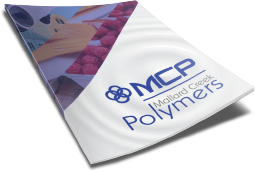
 Construction
Construction
 Nonwovens
Nonwovens
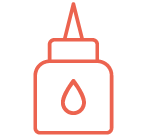 Adhesives
Adhesives
 Textiles
Textiles
 Printing & Packaging
Printing & Packaging
 Paper
Paper
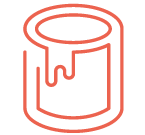 Paints & Coatings
Paints & Coatings



